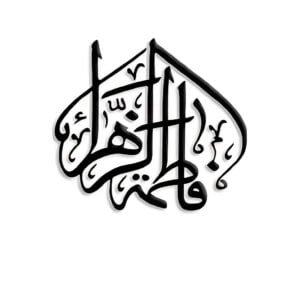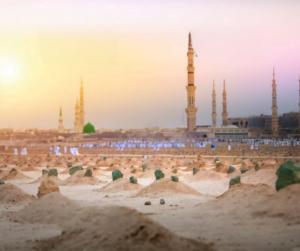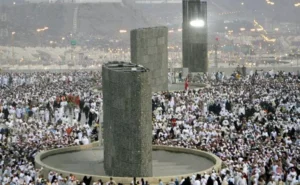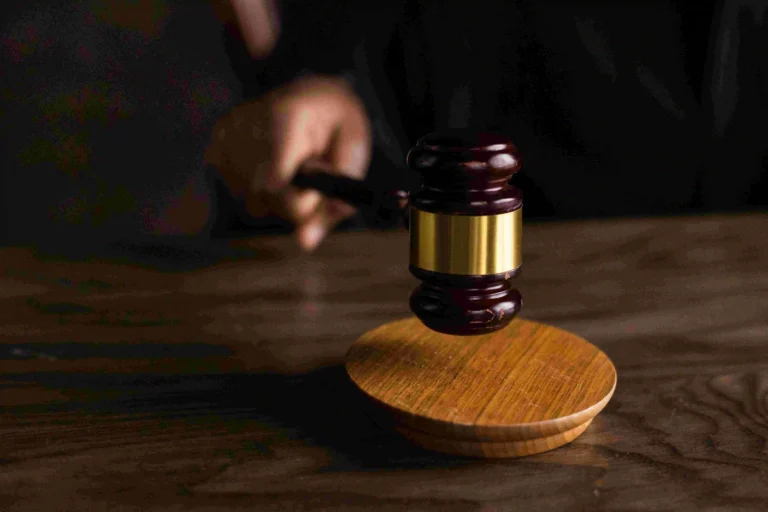Who was Prophet Muhammad (S.A.W.)
Muhammad (SAW) was the prophet and founder of Islam, one of the world’s major religions. He was born in Mecca, Arabia, in the year 570 CE, into the tribe of Quraysh, which was descended from Hazrat Ismail (AS), the son of Hazrat Abraham (AS). Hazrat Abdullah, his father, passed away before he was born, and when he was six years old, his mother Hazrat Aminah passed away. Abu Talib, his uncle, and Abdul Muttalib, his grandfather, who nurtured him.
Earlier Life of Prophet Muhammad (S.A.W.)
Prophet Muhammad (SAW) was born in Mecca, which is today in Saudi Arabia, in 570 AD. His grandfather and then his uncle nurtured him after his father passed away before he was even born. He came from an honorable but poor Qurayshite family. The family was active in trade and politics in Mecca.
At the period, a large number of the nomadic tribes residing in the Arabian Peninsula traded goods while traveling across the desert. The majority of tribes followed polytheism and worshipped different gods. Mecca was an important religious and financial center with a large number of temples and places of worship where people of faith offered prayers to the idols of these gods. The most famous site was the Kaaba (meaning cube in Arabic). Muslims believe that it was built by Hazrat Abraham (AS) (Ibrahim in Islam) and his son Hazrat Ismail (AS). The people of Mecca gradually became more polytheism and idolatry. Believers consider Allah the most powerful of all the gods and the only one without an idol.
In his early teens, Prophet Muhammad (SAW), like many others his age, worked in a camel caravan. He got experience in commercial trade while working for his uncle, eventually traveling from the Mediterranean Sea to the Indian Ocean, including Syria. He traveled to Syria while working for his uncle, where he obtained experience in commercial trade. Prophet Muhammad (Peace be upon Him) eventually had a reputation for being truthful and sincere, earning the title of “al-Amin,” which translates to “faithful” or “trustworthy.”
Prophet Muhammad (S.A.W.) Married with Hazrat Khadijah
As a young man, Prophet Muhammad (Peace be upon Him) worked as a merchant and a shepherd. He was known for his honesty, generosity, and wisdom. He married Hazrat Khadijah (R.A), who was a wealthy and noble woman of Mecca and was known for her intelligence, character, and business acumen. She was a widow and older than the Prophet Muhammad (Peace be upon Him) at the time of their marriage. They had a loving and harmonious marriage. Their union was blessed with seven children, including three sons, Qasim, Ibrahim, and Abdullah, who passed away in infancy, and four daughters: Zainab, Ruqayyah, Umm Kulthum, and Fatimah.
Hazrat Khadijah (R.A) played a pivotal role in supporting and comforting the Prophet Muhammad (Peace be upon Him) when he received his first revelations from Allah through the Angel Gabriel. She stood by him during the difficult early years of his prophethood when the message of Islam was met with resistance and hostility in Mecca. Her unwavering support and belief in him were a source of strength for the Prophet (Peace be upon Him).
Wives of Prophet Muhammad (S.A.W.)
The names of his wives, often referred to as the “Mothers of the Believers,” were:
- Khadijah bint Khuwaylid
- Sawda bint Zam’a
- Aisha bint Abi Bakr
- Hafsa bint Umar
- Zaynab bint Khuzayma
- Umm Salama (Hind bint Abi Umayya)
- Zaynab bint Jahsh
- Juwayriya bint al-Harith
- Umm Habiba (Ramlah bint Abi Sufyan)
- Safiyya bint Huyayy
- Maymunah bint al-Harith
Children of Prophet Muhammad (S.A.W.)
Prophet Muhammad (SAW) had three sons and four daughters. However, all of his sons died in infancy, and his daughters lived to adulthood. Here are the names of his children:
- Qasim
- Abdullah (also known as “al-Tahir” and “al-Tayyib”)
- Ibrahim
- Zainab bint Muhammad
- Ruqayyah bint Muhammad
- Umme Kulsoom
- Fatimah bint Muhammad
First Revelation of the Prophet Muhammad (S.A.W.)
The first revelation of the Prophet Muhammad (SAW) is one of the most significant events in the history of Islam. It marks the beginning of the Prophetic mission and the revelation of the Quran, the holy book of Muslims. According to Islamic tradition, (SAW) was a merchant and a respected member of his tribe in Mecca, Arabia. He was known for his honesty, generosity, and wisdom. He was also dissatisfied with the idolatry and corruption of his society, and often retreated to a cave in Mount Hira to meditate and seek guidance.
The angel Gabriel visited him late at night in the month of Ramadan in the year 610 CE, and said to him: “Read!” Muhammad (SAW) : “I do not know how to read.” The angel repeated: “Read!” Muhammad (Peace be upon Him) said again: “I do not know how to read.” Angel said for the third time: “Read!” Muhammad (Peace be upon Him) asked: “What shall I read?” The angel then recited the first verses of the Quran:
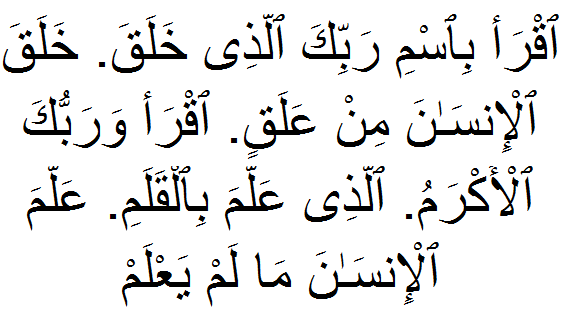
“Read in the name of your Lord who created –
Created man from a clinging clot.
Read, and your Lord is the most Generous –
Who taught by the pen –
Taught man that which he knew not.” (Quran 96:1-5)
Prophet Muhammad (SAW) memorized these words and returned to his home, trembling and fearful. He told his wife Khadija what had happened and said: “I fear for myself.” She comforted him and assured him that he was a good man who would not be harmed by God. She also took him to her cousin Waraqa, a Christian scholar, who confirmed that he had received a divine revelation and that he was the last prophet of God.
After the First Revelation Muhammad Took his Message Public
For the next three years, Prophet Muhammad (SAW) continued to receive revelations privately and shared them only with his close family and friends. He gradually gained a small group of followers who accepted him as the final messenger of Allah. However, he faced opposition and hostility from the majority of the Meccans. Who were polytheists and worshipped many idols in the Kaaba, the sacred shrine of Mecca.
In 613 CE, Prophet Muhammad (SAW) received a revelation that commanded him to proclaim his message publicly. Prophet Muhammad (Peace be upon Him) stood on a hill near Mecca and invited his people to worship the one true God and to abandon idolatry. He also warned them of the Day of Judgment, when they would be accountable for their deeds. He said, “O people of Quraysh! Save yourselves from the fire! I am not responsible for you. “Whatever I am is a messenger from Allah.”
This public declaration marked the beginning of Prophet Muhammad’s (Peace be upon Him) open preaching and his confrontation with the Meccan authorities. He faced ridicule, persecution, and violence from his opponents, who saw him as a threat to their social and economic interests. Tortured and killed for their faith, some of his followers faced persecution. Prophet Muhammad (SAW) himself found protection under his uncle Abu Talib, a powerful chief of his clan.
Despite the hardships, Prophet Muhammad (SAW) continued to preach his message with patience and perseverance. He also received revelations that gave him guidance on various aspects of faith and practice, such as prayer, charity, fasting, and pilgrimage. He also received revelations that addressed the challenges and conflicts he faced in his mission.
Muslims Emigration to Medina
The migration of Prophet Muhammad (SAW) and his followers from Mecca to Medina, is known as the Hijra. It is one of the most important events in the history of Islam. The Hijra took place in the year 622 CE, after 13 years of persecution and oppression by the Meccan pagans. Hijra marked the beginning of a new era for the Muslims. They established the first Islamic community and state in Medina.
To learn more about the Hijrah event and its lasting impact on the Islamic community. You can read more about Hijrah Madina – What is Hijra in Islam
Religious persecution and a lack of freedom to practice Islam in Mecca prompted Prophet Muhammad’s (SAW) migration from Mecca to Medina. The Muslims in Mecca faced harassment, torture, and assassination attempts. They found refuge in Medina, where the Ansar (Helpers) offered protection and support. The Hijra was a test of faith, but it also symbolized solidarity, loyalty, and the establishment of a new Muslim community. It marked a turning point in Islamic history and allowed the Muslims to practice their faith more freely.
Last words of Prophet Muhammad (S.A.W.)
The last words of Prophet Muhammad (SAW), are recorded in various Hadith (sayings and actions of the Prophet) in the collection of Hadith books, primarily in Sahih al-Bukhari and Sahih Muslim. These last words are often referred to as his farewell sermon, which he delivered during his final pilgrimage (Hajj) in the year 632 CE, shortly before his passing. In this sermon, the Prophet Muhammad (SAW) addressed his followers and emphasized important principles of Islam. Such as equality, justice, and the sanctity of human life.
“O People! No Prophet or apostle will come after me and no new faith will be born. Reason well, therefore O People! and understand the words that I convey to you. I leave behind me two things, the Quran and the Sunnah and if you follow these you will never go astray.”
“All those who listen to me shall pass on my words to others and those to others again; and may the last ones understand my words better than those who listen to me directly.”
“O Allah, be my witness, that I have conveyed your message to Your people.”
As part of this sermon, the prophet recited to them a revelation from Allah, which he had just received, and which completed the Quran, for it was the last passage to be revealed.
Death of Prophet Muhammad (S.A.W.)
Prophet Muhammad (SAW) passed away on Monday, 632 CE, in the city of Medina, marking a momentous event in Islamic history. At the age of 63, he succumbed to an illness, commonly described as a fever or infection, in the apartment of his wife Aisha, where he had been residing during his final days. Muslims believe that the death of Prophet Muhammad (SAW) signified the conclusion of prophethood in Islam, as he was the last prophet sent by Allah to guide humanity.
Prophet Muhammad’s (SAW) life and teachings, as enshrined in the Quran and Hadith, remain a wellspring of spiritual guidance and moral inspiration for Muslims worldwide. The anniversary of his death is a time of reflection, remembrance, and communal activities for Muslims, underscoring the enduring religious and historical significance of this event.
Conclusion
In the 7th century, Allah chose Prophet Muhammad (Peace be upon Him) as the last messenger to guide humanity through the revelation of the Quran. Marked by his unyielding commitment to monotheism and justice, Prophet Muhammad’s (Peace be upon Him) life began in humble circumstances. The migration to Medina, known as the Hijra, was a pivotal moment that allowed the Muslim community to thrive and practice their faith. His death marked the end of prophethood in Islam, leaving a profound legacy that continues to shape the lives of Muslims worldwide through the Quran and Hadith. Prophet Muhammad’s (Peace be upon Him) enduring example serves as a beacon of faith, compassion, and moral guidance for generations to come.



